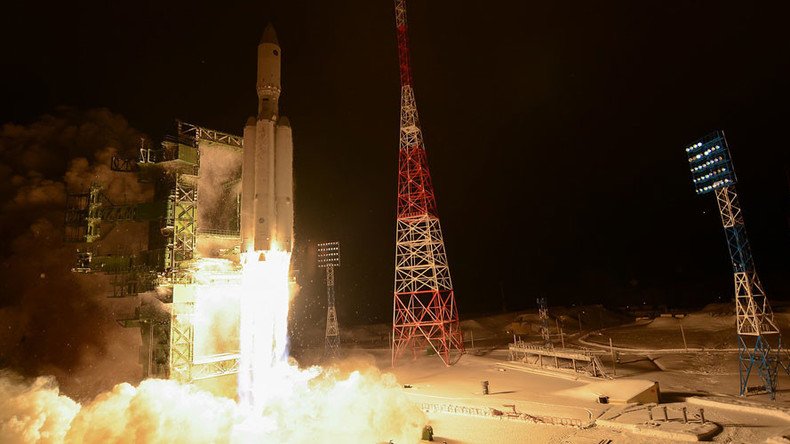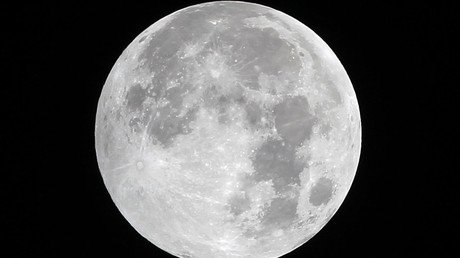Russia’s A5V moon mission rocket may be replaced with new super-heavy-lift vehicle

The Russian space agency is designing a new launch vehicle for future moon missions incorporating legacy technology from the Energia-Buran project instead of pushing for the extra-lift version of the Angara rocket, the chief of Energia Corporation said.
Energia and Roscosmos are “working on a super heavy-lift launch vehicle (SHLLV) that would use an engine that we already have, the RD-171,” Vladimir Solntsev told Izvestia newspaper.
The RD-171 is derived from the Energia-Buran, the short-lived soviet reusable manned spacecraft project similar to NASA’s Space Shuttle. The Energia launcher used four strap-on boosters each equipped with a four-chamber RD-170 engine for its first stage. The engine was later modified for the Zenit rocket family. Other variants with fewer chambers are currently used in Atlas V rockets and Russia’s newest Angara rockets.
The proposed launcher would use other available technology, including the Briz-M third stage from the Angara A5.
“This compilation would allow us to save time and money. We take what is already there, don’t pay extra costs and don’t get stretched into future decades. I’m certain that we can have a heavy-lift rocket this way in record time, about five to seven years,” Solntsev told the newspaper.
The plan was confirmed by Roscosmos chief rocket designer Aleksandr Medvedev, Izvestia said.
The development of a new rocket for extra-heavy payloads, which would be necessary for Russia’s planned manned moon missions, is step sideway from the previous plan, which was to have a variant of Angara do the job.
Angara is the latest family of Russian rockets based on universal modules. The idea is to have streamlined production and assembly of basic building blocks and combine them for the necessary payload. The A5V variant is meant to become the launch vehicle for moon missions thanks to extra lift given by a hydrogen/oxygen third stage.
The rocket would be able to put about 40-ton payload into low-Earth orbit, but it still would be a far cry from the 140 tons, which could be lifted by the Saturn V, the rocket used for the Apollo program. The proposed new SHLLV would initially have a LEO lift of 80 tons with a potential to increase the figure to 120 tons or even 160 tons, according to Solntsev.
The replacement would have a profound impact on how Russia would conduct its planned moon missions, scheduled for the 2030s. With Angara A5V one manned landing would require four separate launches to deliver a manned capsule, a lander and two modules for propulsion, according to the current plans. The flight pattern would also require two rendezvous in Earth orbit and one lunar rendezvous before a landing can be conducted. The Apollo program used lunar rendezvous as well, but all the necessary modules were lifted in a single Saturn V launch.
“The four-launch arrangement allows not using an SHLLV at all. But for us today it’s a backup option,” Solntsev said. “Of course we have been dealing with multiple launches and dockings in various orbits for decades and should not overlook them when planning missions to other planets. But it’s a complex process. To tackle all flight and technical details we would have to launch rockets within no more than three days.”
The timing requirement would require Russia’s new Vostochny Cosmodrome to have two operational launch pads by the time of the first moon mission. This is not part of the current development project.
Unlike the Angara A5V, the proposed launch vehicle would not use hydrogen as propellant for any of its stage, the Energia head told the newspaper. Russian rocket designers have some experience with hydrogen engines – in fact the Energia rocket had four hydrogen engines at its core – but other propellants are more commonly used in Russia. Liquid hydrogen would also require investment into extra infrastructure at the launch facility, boosting the cost of the future missions.













